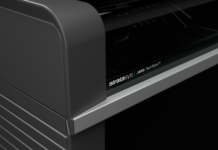The control Methods are documents relating to all types of controls listed in the Laboratory Plan and they indicate the purpose of the test, the material needed to run it and the “modus operandi”. The presence of such methods is absolutely necessary because they have both the function of guiding the operator during the test, and that of training of any new operator.
The example showed in box 1 applies to titling tests for cards, drawing frames and combing machines.
[frame align=”left”]Box 1: Title control of tapes, cards, drawing frames, combing machines
Aim: controlling the average title and its stroke within each machine; concerning cards and combing machines also check the average title and its stroke in the Department.
Needed material: handouts mod. n°, tambourine for 1 yd circumference tapes, digital scale.
Procedure:
1) pick 5 samples by 7 yds each;
2) weigh the samples on the digital scale;
3) calculate the titles and write them down on the handouts;
4) calculate the average title of each machine, the deviation between the samples and, in case of cards and combing machines, the Department average title and global deviation;
5) indicate the outsize on the Control Card.[/frame]
The calculation formulas are simple mathematical formulas, used by the operator in order to calculate the various parameters of Quality Control.
The formulas for the transformation of the weight in grams of the sample entitled Ne, depend on the length of the sample in use: for cards, drawing frames and combing machines where the sample’s size is 7 yds, the formula is Ne = 3.78/g, for the bench wick (sample size 10 yds) Ne = 5.39/g and finally for the yarn where the length is 120 yds the formula is Ne = 64.74/g.
The calculation of the machines’ and Department’s coefficient of variation involves using an Excel sheet from which, once the collected titles are inserted, it is possible to easily and very precisely calculate the average value of the title, average deviations, the sum of squared deviations, the variance, standard deviation, and finally the CV%.
Other formulas of great simplicity are related to the calculation of the combing machine deviation and the transformation of the twist from r/min to r/”.
The results of all laboratory tests are logged on Handouts specifically conceived in relation to the number of spinning machines and the frequency of the tests established by the laboratory Plan.
Table 2 shows an example of handout related to the control of Ne title in the carding Department.
Ne and CV% Ne control |
Department: Card |
Model |
|||||
|
|
|
Card |
Card |
Card |
Card |
Card |
Card |
Date |
|
1 |
2 |
3 |
4 |
5 |
6 |
|
|
Ne |
|
|
|
|
|
|
|
|
Ne |
|
|
|
|
|
|
Ne |
|
|
|
|
|
|
|
Ne |
|
|
|
|
|
|
|
Ne |
|
|
|
|
|
|
|
Ne average card |
|
|
|
|
|
|
|
CV% Ne card |
|
|
|
|
|
|
|
|
|
Department Ne average |
|
|
||||
Department CV% Ne |
|
||||||
As expected by the Plan, there are weekly controls; following the Method for this type of test, 5 samples of 7 yds/card are realized, they are weighed on the digital scale and, according to the above-mentioned formula, the titles of each sample are calculated. The latter are followed by the calculations of the average title and the machine and Department coefficient of variation.



